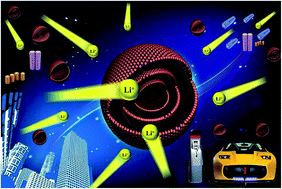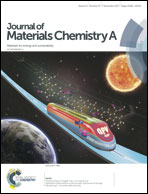One-pot controllable synthesis of CoFe2O4 solid, hollow and multi-shell hollow nanospheres as superior anode materials for lithium ion batteries†
Abstract
A straightforward and general strategy for the large-scale synthesis of hollow metal oxide shells with controlled size, composition and internal structure is highly desirable owing to their significant applications in energy storage devices such as lithium ion batteries (LIBs). In this work, we design for the first time a one-pot and cost-effective method to controllably fabricate CoFe2O4 solid nanospheres (CFO-SNSs), CoFe2O4 hollow nanospheres (CFO-HNSs) and multi-shell CoFe2O4 hollow nanospheres (MS-CFO-HNSs) on a large scale by just varying the calcination conditions. Compared with CFO-SNSs and CFO-HNSs, as anode materials for LIBs, MS-CFO-HNSs deliver a superior lithium storage capacity, which stabilize at a reversible capacity as high as 1354 mA h g−1 after 500 cycles at a current density of 500 mA g−1. Even at the high current densities of 1000 and 5000 mA g−1, the specific capacities of MS-CFO-HNSs are still up to 1041 and 570 mA h g−1 after 500 cycles (88.9% and 86.9% of the capacity retention), which break the previous records and exhibit the best cycling performance among the as-reported ternary transition metal oxide (TTMO) materials with the same structures or ingredients owing to the unique nanoscale size of MS-CFO-HNSs, thus providing a preview of their practical applications in LIBs.



 Please wait while we load your content...
Please wait while we load your content...